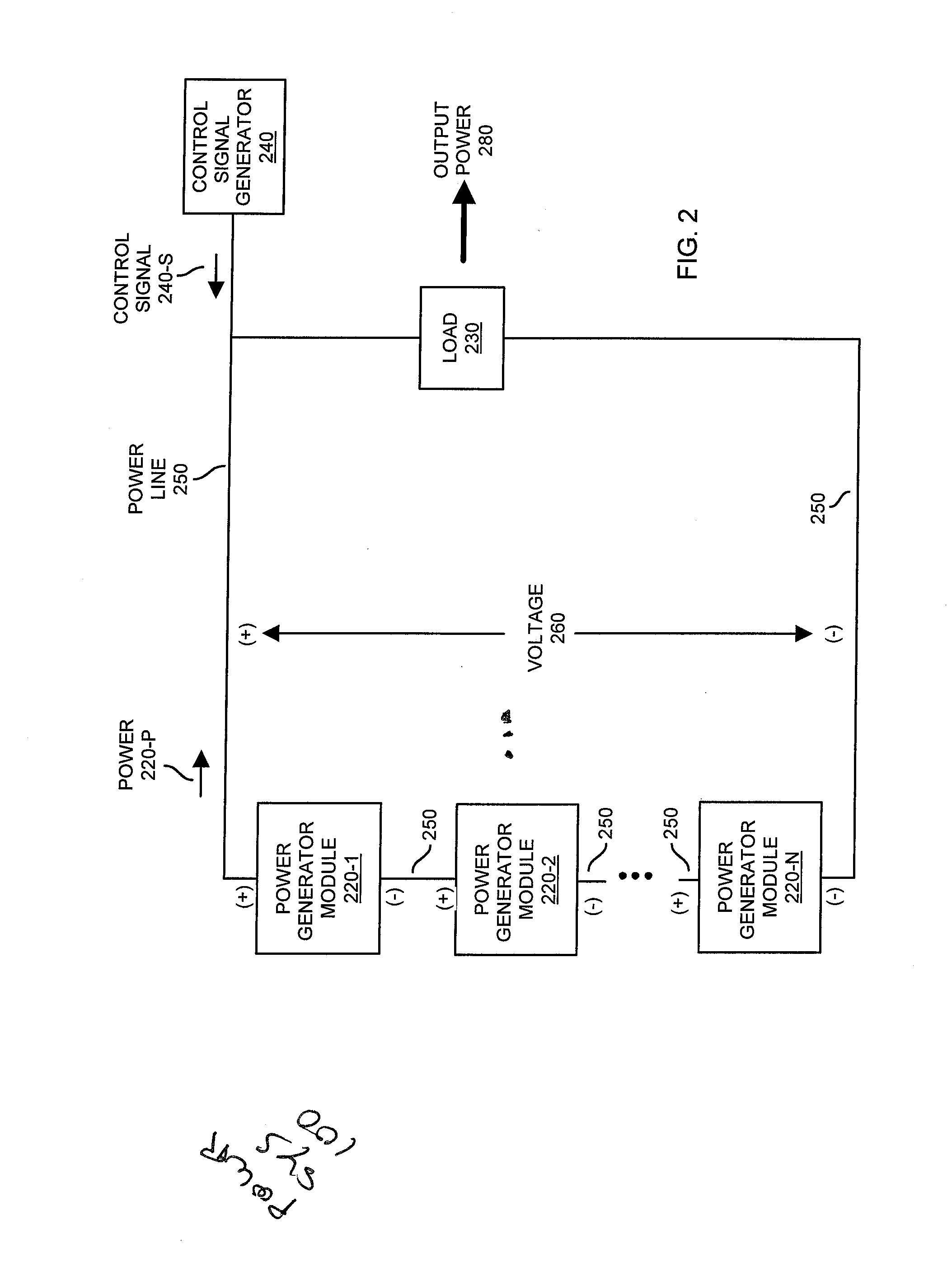Power generator module connectivity control
a power generator and module technology, applied in photovoltaic monitoring, dc source parallel operation, two-wire dc circuits, etc., can solve problems such as danger to emergency personnel such as firemen and pv system maintenance personnel, and excessive reverse currents from other strings
- Summary
- Abstract
- Description
- Claims
- Application Information
AI Technical Summary
Benefits of technology
Problems solved by technology
Method used
Image
Examples
Embodiment Construction
[0030]As discussed above, embodiments herein deviate with respect to conventional power generation systems.
[0031]More specifically, FIG. 2 is an example diagram illustrating control of a series connection of selectively activated power generator modules according to embodiments herein.
[0032]As shown, power system 100 includes at least one string of power generator modules 220 (e.g., power generator module 220-1, power generator module 220-2, . . . , power generator module 220-N), control signal generator 240, and load 230.
[0033]Note that the power system 100 can include any suitable number of strings of power generator modules 220 in parallel to produce voltage 260.
[0034]As its name suggests, control signal generator 240 generates one or more control signals 240-S to control the power generator modules 220.
[0035]More specifically, in one embodiment, control signal generator 240 produces control signal 240-S to control functionality associated with the power generator modules 220. Fo...
PUM
 Login to View More
Login to View More Abstract
Description
Claims
Application Information
 Login to View More
Login to View More - R&D
- Intellectual Property
- Life Sciences
- Materials
- Tech Scout
- Unparalleled Data Quality
- Higher Quality Content
- 60% Fewer Hallucinations
Browse by: Latest US Patents, China's latest patents, Technical Efficacy Thesaurus, Application Domain, Technology Topic, Popular Technical Reports.
© 2025 PatSnap. All rights reserved.Legal|Privacy policy|Modern Slavery Act Transparency Statement|Sitemap|About US| Contact US: help@patsnap.com



